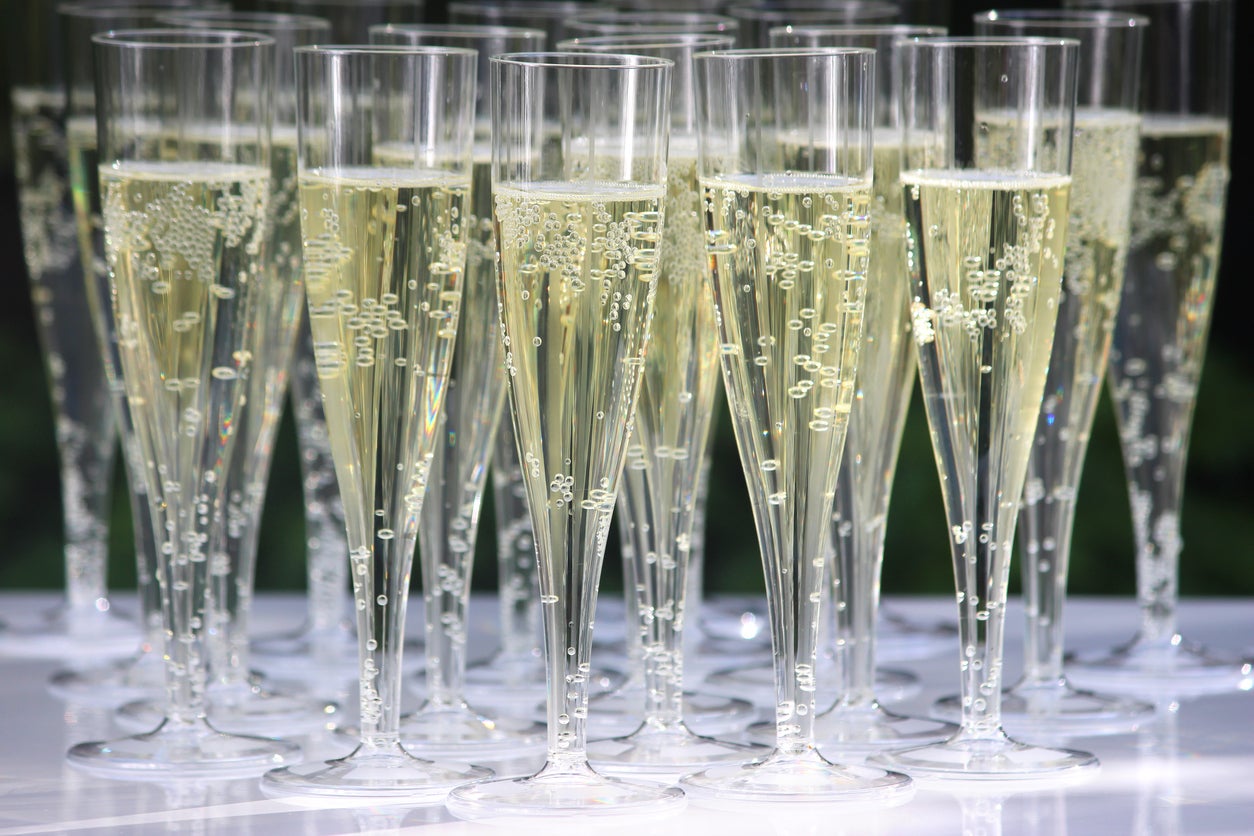Champagne tastes different in plastic cups compared to glass flutes, study finds
Think twice before you pour your bubbly into a beaker from the water cooler

‘Tis the season when the bubbly is flowing and there’s always a reason to pop a cork.
But a new study into champagne has proven that the taste is affected by the material of the drinking vessel.
If you think the prosecco you crack open at your desk before the work Christmas party and sip from a plastic water cooler cup doesn’t taste as good as it normally does at home from a glass flute, you’d be correct - serving sparkling wine in plastic or polystyrene cups makes the bubbles behave differently.
The reason for this is that in disposable cups, the bubbles stick to the sides for longer and get bigger as a result.
“It turns out the bubble formation process on styrofoam is completely different than on glass,” said lead study author Kyle S. Spratt from the Applied Research Laboratories at the University of Texas at Austin.
“So, if you ever have to resort to drinking champagne out of a styrofoam cup, the bubbles will be quite different.”
And even if flute-shaped, plastic is no better than styrofoam.
“Using plastic glasses, for example, really isn’t so good because the bubbles actually stick quite strongly to the walls of the glass [and so are] bigger before they lift off,” said Andrea Sella, professor of inorganic chemistry at University College London.
The discovery was made as part of a study into how the sound and size distribution of bubbles affects the taste of champagne.
The researchers aimed to study the sounds made by champagne bubbles and see what could be inferred about the bubbles by the sound they make.
“Bubbles are very resonant,” Spratt explains. “They basically ring like bells, and the frequency of that ringing depends in part on the size of the bubbles.
“There is a well-known notion that the quality of a sparkling wine is correlated to the size of its bubbles, and we are investigating whether the bubble size distribution of a sparkling wine can be obtained from simple acoustical measurements.”
The team investigated the properties of the bubbles using a hydrophone, a piezoelectric transducer-based device that records underwater sound.
“When we came across the idea that bubbles play an important role in the quality of a sparkling wine, our first instinct was to drop a hydrophone into a glass and see what kind of sound we can hear,” said Spratt.
But when trying to do this, they encountered difficulties.
“The process of taking measurements in a carbonated beverage was more challenging than we expected, mainly because bubbles form on the hydrophone itself and that can greatly affect the data that is collected,” said Spratt.
They resorted to a very small hydrophone.
The researchers found that the sounds made are not in fact the bubbles popping, but forming. The smaller the bubble, the higher the pitch at which it resonates.
They discovered that the bubbles in the fancier champagnes were smaller, there was less variation in bubble size and that there was more bubble activity in general.
And bubble size is important for the taste of a sparkling wine or champagne, as our mouths are very sensitive to different textures.
So to make sure your champagne (or prosecco, cava or sparkling wine) tastes best, skip the water cooler cups and bring in your own glass flute. Stay classy.
Subscribe to Independent Premium to bookmark this article
Want to bookmark your favourite articles and stories to read or reference later? Start your Independent Premium subscription today.

Join our commenting forum
Join thought-provoking conversations, follow other Independent readers and see their replies